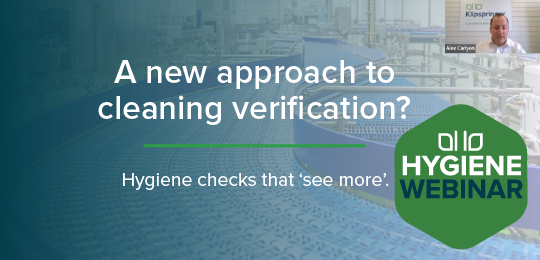A3 Technology detects not only ATP, but also the lower-energy molecules ADP and AMP. Consequently, the device offers you far greater visibility and sensitivity when it comes to cleaning effectiveness.
The A3 Lumitester Smart is a quick and simple device for hygiene control and rapid detection of food and residues on surfaces. With Bluetooth connection, the unit sends results wirelessly to your mobile or tablet, or alternatively via a cable to your PC. There is also a cloud app for storing and presenting the data.
The ATP test is one of the most commonly used hygiene tests, but in reality ATP is very unstable molecule, often downgrading into ADP and AMP. This results in unreliable measurements by conventional ATP-only tests. Using A3 technology, the Lumitester Smart detects ATP + ADP + AMP, offering unmatched sensitivity and finding the residues that were previously overlooked.
- Lightweight and easy-to-use.
- Highly sensitive, precise measurement of ATP, ADP and AMP, giving far superior sensitivity than conventional ATP meters.
- Auto-calibration.
- Set your own limits for pass/fail results.
- Bluetooth connection to app for storage of measurement results in the Cloud, allowing you to access the results from anywhere.
- Data visualisation in the app makes the measurement results easy to see and analyse in detail.
- Free Technical Support Available.
- 12 month warranty.
- Next day delivery for all swabs meaning there is no need to keep stock of swabs on site.
| Temperature range | 5 - 40°C | Weight | 255g |
|---|---|---|---|
| Dimensions (mm) | 65 x 176 x 40mm | Software | Lumitester App |
| Power supply | 2 alkaline batteries (AA) | Unit of measurement | RLU |
| Data memory | 2000 Analyses | Incubation time | 10 sec |
| Connectivity | USB, Bluetooth LE (Ver4.1) | Evaluation | Bioluminescence |
Standard ATP Comparison
Reagent’s reaction inhibitants.
Referential Benchmarks.
System Overview
Quick Start Guide
Glucose and the ATP paradox in yeast
White Paper
Q: What is A3 Technology?
A: A3 Technology is a patented system that combines adenosine triphosphate (ATP) testing with the detection of lower-energy molecules, adenosine diphosphate (ADP) and adenosine monophosphate (AMP). It enables the rapid detection of organic residues and microorganisms, providing enhanced sensitivity compared to conventional ATP tests.
Q: What is ATP?
A: ATP (Adenosine triphosphate) is a vital energy molecule found in all living cells. It serves as the energy source for various biological processes and is fundamental to life. ATP testers can identify the presence of organic substances in a sample, but regular ATP tests specifically detect ATP molecules only.
Q: What is the difference between ATP and A3?
A: While ATP testing measures ATP levels, A3 Technology goes a step further by detecting ATP, ADP, and AMP. This expanded detection capability increases sensitivity, allowing for the identification of even the smallest residues and microorganisms. A3 Technology is particularly valuable for situations, where ATP degrades into ADP and AMP, rendering it undetectable by conventional tests
Q: How does A3 Monitoring work?
A: A3 Monitoring involves using the A3 Lumitester Smart device along with the LuciPac A3 swabs. This system detects organic residues and microorganisms on surfaces and in liquids, providing real-time assessment of cleanliness after cleaning and disinfection procedures. By measuring ATP, ADP, and AMP, it ensures precise detection of contaminants and offers maximum user convenience. The device can be connected to smartphones, tablets, and laptops for comprehensive data analysis, allowing for monitoring of hygiene across multiple locations.
Q: Do all foods contain ATP?
A: Yes, ATP is present in all organic matter, including food. However, ATP levels can vary. In some cases, ATP may be reduced to ADP or AMP due to factors like stressed bacteria from cleaning, lack of nutrition, or exposure to high temperatures.
Q: What is RLU?
A: RLU stands for Relative Light Units. It refers to the numerical value assigned to the "glow" produced by the enzyme in the solution during ATP testing. RLU values indicate the degree of contamination with microorganisms and food debris, which is not visible to the human eye.
Q: Can A3 detect allergens?
A: A3 can detect allergen residues as they contain ADP and AMP. However, it cannot confirm the specific type of allergen present.
Q: Can you correlate RLU and CFU values?
A: CFU and RLU values are determined using different test methods. It is very difficult to consistently correlate RLU values to CFUs when testing an environmental surface.
Q: Can the accuracy of the swab be compromised?
A: The accuracy of the swab can be compromised if used in extremely low pH, or high concentration of detergents (ie. Chlorine). Click here for more information.
Q: What areas should I test?
A: Direct and indirect food contact areas, as well as difficult to clean areas.
- Direct contact areas – all surfaces with direct contact to food samples that can contaminate the product.
- Indirect contact areas – are the areas where contaminant has potential to be transferred to the product.
- Difficult to clean areas include parts of machinery like nozzles and o-rings as well as irregular shaped surfaces.
For long term storage we recommend storing the swabs in refrigerator at 2-8°C.
The swab devices should be allowed to reach room temperature prior to testing if they are from refrigerated stock.
Do not let the swabs sit out in temperatures exceeding 35°C. High temperatures may cause product performance to drop.


















